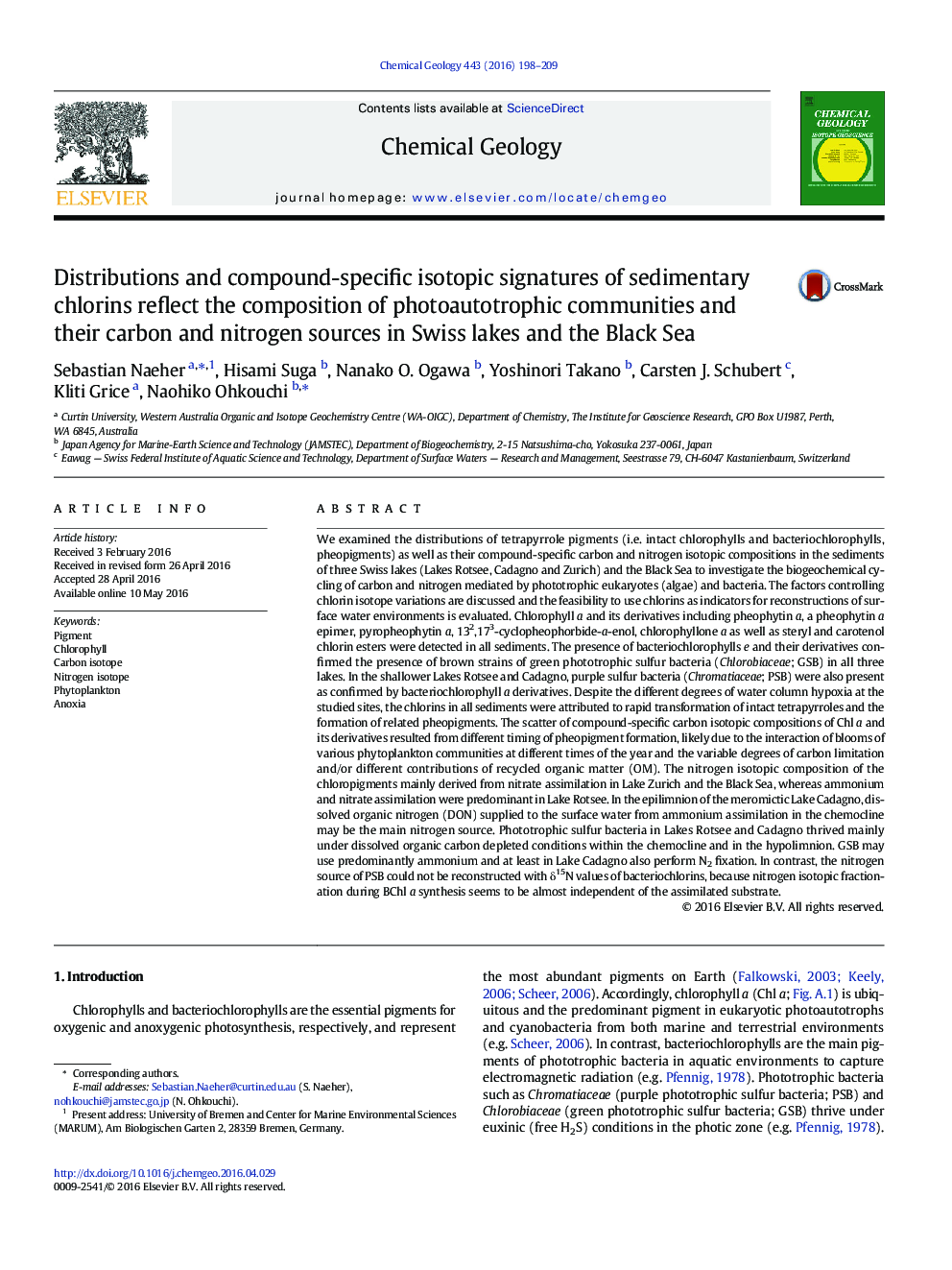| کد مقاله | کد نشریه | سال انتشار | مقاله انگلیسی | نسخه تمام متن |
|---|---|---|---|---|
| 6436008 | 1637531 | 2016 | 12 صفحه PDF | دانلود رایگان |
We examined the distributions of tetrapyrrole pigments (i.e. intact chlorophylls and bacteriochlorophylls, pheopigments) as well as their compound-specific carbon and nitrogen isotopic compositions in the sediments of three Swiss lakes (Lakes Rotsee, Cadagno and Zurich) and the Black Sea to investigate the biogeochemical cycling of carbon and nitrogen mediated by phototrophic eukaryotes (algae) and bacteria. The factors controlling chlorin isotope variations are discussed and the feasibility to use chlorins as indicators for reconstructions of surface water environments is evaluated. Chlorophyll a and its derivatives including pheophytin a, a pheophytin a epimer, pyropheophytin a, 132,173-cyclopheophorbide-a-enol, chlorophyllone a as well as steryl and carotenol chlorin esters were detected in all sediments. The presence of bacteriochlorophylls e and their derivatives confirmed the presence of brown strains of green phototrophic sulfur bacteria (Chlorobiaceae; GSB) in all three lakes. In the shallower Lakes Rotsee and Cadagno, purple sulfur bacteria (Chromatiaceae; PSB) were also present as confirmed by bacteriochlorophyll a derivatives. Despite the different degrees of water column hypoxia at the studied sites, the chlorins in all sediments were attributed to rapid transformation of intact tetrapyrroles and the formation of related pheopigments. The scatter of compound-specific carbon isotopic compositions of Chl a and its derivatives resulted from different timing of pheopigment formation, likely due to the interaction of blooms of various phytoplankton communities at different times of the year and the variable degrees of carbon limitation and/or different contributions of recycled organic matter (OM). The nitrogen isotopic composition of the chloropigments mainly derived from nitrate assimilation in Lake Zurich and the Black Sea, whereas ammonium and nitrate assimilation were predominant in Lake Rotsee. In the epilimnion of the meromictic Lake Cadagno, dissolved organic nitrogen (DON) supplied to the surface water from ammonium assimilation in the chemocline may be the main nitrogen source. Phototrophic sulfur bacteria in Lakes Rotsee and Cadagno thrived mainly under dissolved organic carbon depleted conditions within the chemocline and in the hypolimnion. GSB may use predominantly ammonium and at least in Lake Cadagno also perform N2 fixation. In contrast, the nitrogen source of PSB could not be reconstructed with δ15N values of bacteriochlorins, because nitrogen isotopic fractionation during BChl a synthesis seems to be almost independent of the assimilated substrate.
Journal: Chemical Geology - Volume 443, 2 December 2016, Pages 198-209
